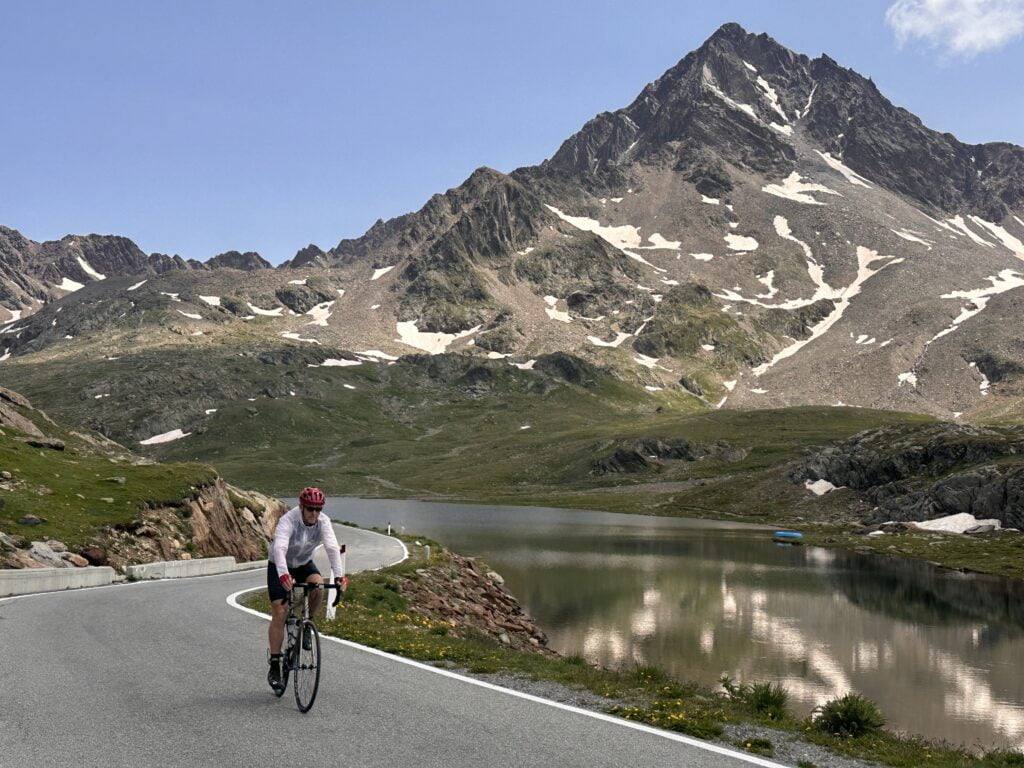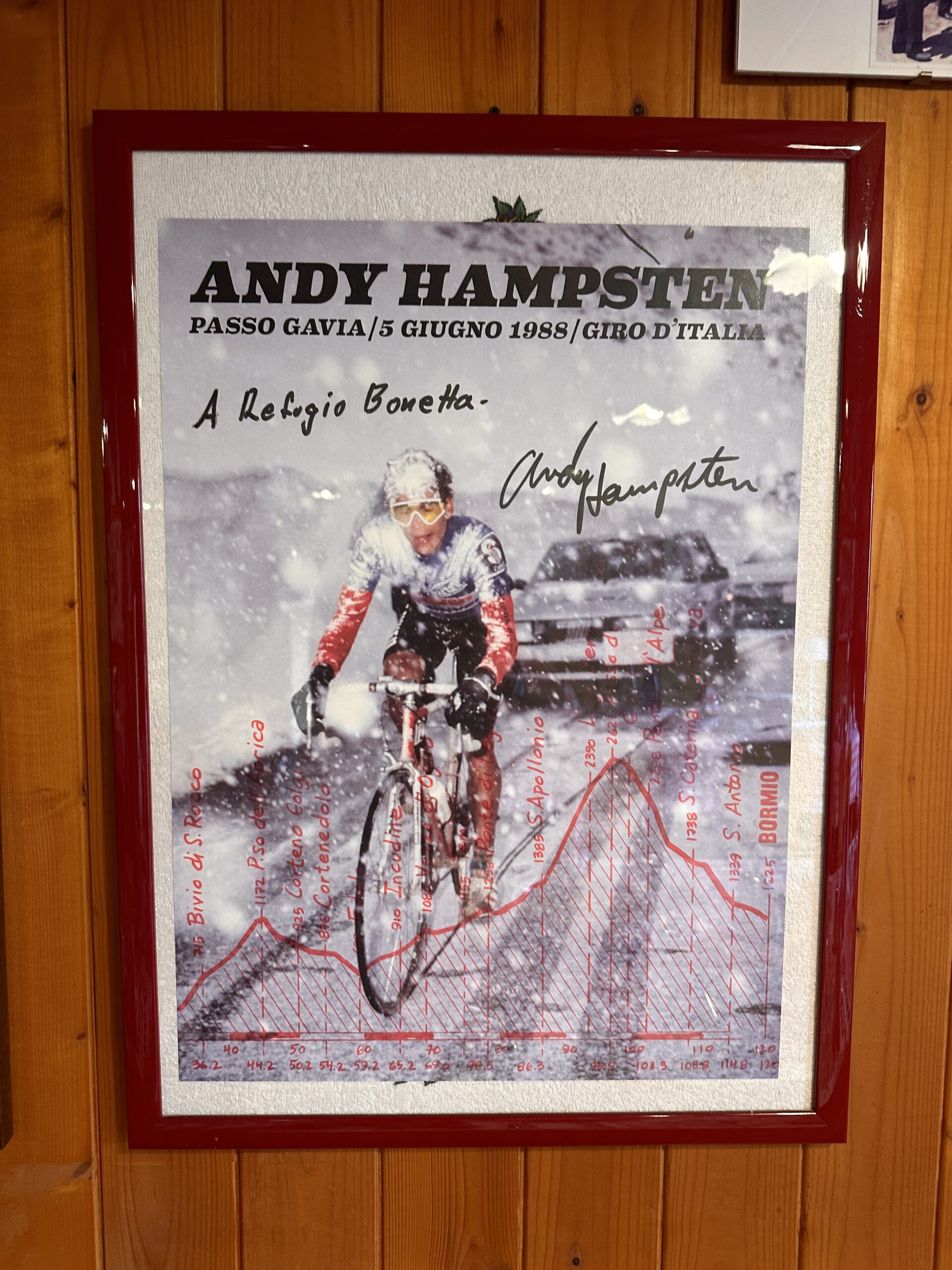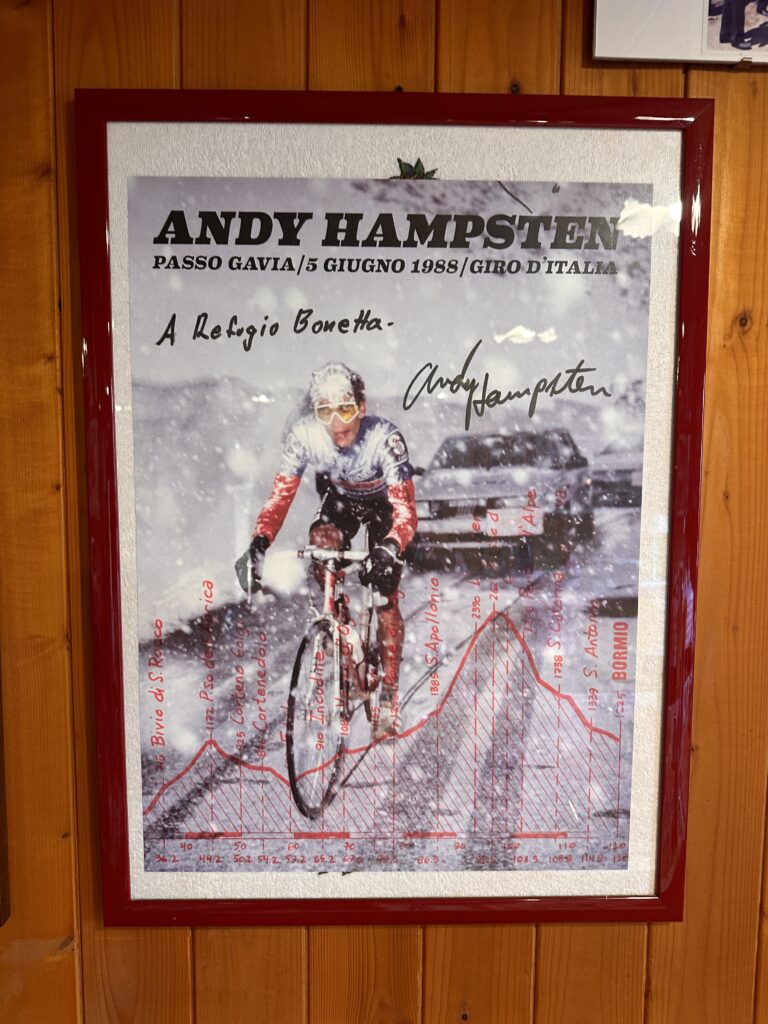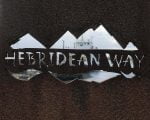American Flyer
Andy Hampsten and the Passo di Gavia

American Flyers
In 1985, 23 year-old American cyclist Andy Hampsten won stage 20 of the Giro d’Italia. He was riding with Jim Ochowitz’s 7-Eleven team, which had just turned professional that year and relocated to Europe. Their line-up included 1984 Los Angeles, Olympic Gold Medalists Alexi Grewal and Eric Heiden.
As an amateur outfit, 7-Eleven had featured in the 1985 movie, American Flyers starring Kevin Costner. However, Hollywood fiction was about to pale in comparison to the epic drama that was set to put the team, and Andy Hampsten in particular, into the annals of road cycling legends.
Team 7-Eleven
In 1985, Team 7-Eleven received a wildcard team invitation to the Giro d’Italia, one of the three Grand Tours. It was the chance of a lifetime for the fledgling American team and one that Ochowitz was not about to let slip through his fingers. He assembled a team and added Andy Hampsten to the roster. Hampsten at that time was already racing in Europe with Levi’s-Raleigh SRC, an American amateur team who were making forays into Europe. Hampsten was given a 30-day contract on loan from Levi’s-Raleigh SRC and it was a move that would make his career. That year Hampsten won stage 20 of the Giro d’Italia and his team-mate Ron Kiefel won stage 15, making him the first American ever to win a stage in a Grand Tour.
For a wild card team, this performance was above and beyond what was expected of them and it earned them an invitation to the Tour de France in 1986. The wins also boosted the team’s profile and put them on a trajectory to be one of the major players in professional road racing for the next decade.
La Vie Claire, Greg Lemond and Bernard Hinault
Andy Hampsten’s course was set for a different route. Following his Stage 20 win in the Giro d”Italia he was signed by Bernard Hinault’s La Vie Claire team. It was here, in 1986, that Hampsten teamed up with fellow American maverick rider, Greg Lemond who was soon to become a legend in his own right. That year Lemond won the Tour de France in an epic and contentious battle with his team mate Bernard Hinault, making him the first American and first non-European to win a Grand Tour. Despite Hinault’s chagrin at losing the Tour to his team mate, the team did spectacularly well with Andy Hampsten finishing in fourth place overall and winning the Young Rider Classification. Swiss rider Niki Rüttimann also placed in seventh overall for La Vie Claire.
Andy Hampsten was proving himself on the world stage of professional road cycling and building a reputation as a strong and fearless rider. His reputation would be sealed in the 1988 Giro d’Italia. After the 1986 Tour de France Hampsten again joined the 7-Eleven team, this time on a full contract. He stayed with the team for the next five years.
The 1988 Giro d’Italia – the Corsa Rosa
The stage is set
With a panoramic view of the Northern Apenine mountains around them, twenty teams (180 riders) lined up on the start line in front of the Ducal Palace in Urbino for the 1988 Giro d’Italia. 1987 Giro winner, the Irishman Stephen Roche, had been sidelined with a knee injury and was not present, so the overall classification was up for grabs. The main protagonists were highlighted as Andy Hampsten; the Swiss cyclist, Urs Zimmerman; Dutch rider, Erik Breukink; the Italian, Franco Chiocciolli, who would go on to win the Giro in 1991, and the Spaniard Pedro Delgado who had won the Vuelta a España in 1985 and would go on to win the Tour de France in 1988.
The route
Unusually by today’s standards of Grand Tours, the 1988 edition of the Giro d’Italia contained four time trials, one of which would be a team time trial, one a climbing time trial up to Valico del Vetriolo, and one which would be held on the final day. The race would feature thirty categorised climbs.
Four of these climbs would be summit finishes: Stage 6 – Campitello Matese; Stage 12 – Selvino; Stage 13 – Chiesa; Stage 15 – Merano 2000.
There were no rest days and on each of two days there would be two stages; stages 4a and 4b – 123 km road stage followed by a 40 km team time trial, and then the final stage which would feature a 73 km road stage and a 43 km individual time trial.
Time trials and split stages – the early stages
Frenchman Jean François Bernard took the first Maglia Rosa with time trial win on a 9 km course. He held the jersey until stage 4a when Massimo Podenzana got in a breakaway and won stage 4a. The win and the time bonus gave Podenzana enough of an advantage to take the Maglia Rosa. He would hold onto the jersey until stage 12.
A Eurocentric peloton
Of the 180 riders competing in the 1988 Giro d’Italia, 98 were Italian and the rest were made up from other nations mainly within the traditional heartland of professional road racing. The 1980s were changing days inside the peloton: with Greg Lemond winning the Tour de France in 1986 and Stephen Roche winning the Giro d’Italia in 1987, continental Europeans could see their traditions and beloved races being eroded by ‘incomers’. There was a pervasive xenophobia among some in the cycling peloton and fanbase who did not like ‘foreigners’ taking over ‘their’ races. Winning stages was tolerated, but winning races overall was just taking it all a step too far.
This attitude made it all the more impressive that riders such as Roche, Lemond and Hampsten could face down other teams’ combined forces against them and still come out on top. It was this atmosphere that Hampsten faced as he aimed for victory in the Giro in 1988.
Environmental protests
You may think that environmental protesting is a modern day symptom of a nonchalant culture towards our planet, but Stage 11 of the Giro d’Italia proves otherwise.
Road cycling has always been a focus for protesters. The link between the newspapers and Grand Tour race organisation has meant that disruption of these events has always been assured national and international media coverage of issues facing communities.
Stage 11 of the Giro d’Italia was annulled as local people protested in the final mile, blocking the race route. The protesters were trying to raise awareness of chemical manufacturer Montedison which, they claimed, was polluting the Bormida River.

Stage 14 – The Passo di Gavia
5th June 1988 Chiesa in Valmaenco to Bormio (120 km)
The Gavia is a beautiful climb, surrounded by towering peaks, reflected in the crystal waters of Lago Bianco at the summit. It was not so on the 13th June 1988.
The Passo di Gavia was first used in the Giro d’Italia in 1960 and it had been causing occasional mischief in the race ever since. However, it was in 1988 that it would raised to the status as an iconic arena of professional cycling. It was one of those moments where the television images and photographs captured the brutality of professional road racing and the disregard nature has for humanity.
Many of the riders on that day’s stage will tell you that it was one of the hardest stages in the history of pro cycling. The Passo di Gavia is a hard climb, but in the valley it was clear that the weather was going to make this day even harder. There was some confusion as to whether the stage would be cancelled. There was a meeting of team directors as, with freezing rain falling in the valley, it was clear that the summits would have snow.
Since the upper sections of the Passo di Gavia at that time were unpaved, this would make conditions that much worse. Andy, however, was used to tough conditions as he spent his off-season training on unpaved roads in the mountains around Boulder, Colorado. He therefore knew that other riders were underestimating the severity of the challenge that faced them.
7-Eleven team manager, Jim Ochowicz was also thinking ahead. Hampsten was within grasp of the Maglia Rosa, 1 minute 18 seconds behind race leader Franco Chioccioli; Ochowicz was not going to let the chance for a podium spot, or perhaps even an overall victory for his rider slip away: he was not just going to rely on his rider’s resilience and experience of riding in extreme conditions.
The night before stage 14, Ochowicz went to the local ski shop and bought up their stock of winter gloves and issued them to the team. He informed the team of the strategy of driving to the summit of the Gavia, ahead of the race and positioning themselves ready to hand out bottles of hot tea, hats and jackets. He described his journey to the summit as ‘taking forever’ as they had to negotiate several small avalanches. Mike Neel, the team directeur-sportif insisted that the team cover their entire bodies in lanolin. Andy Hampsten said it was “like we were preparing to swim in the English Channel”.
The stage started with a breakaway of nine riders including Johan Van Der Velde. Hampsten said of the early part of that day: “I’m frozen. It’s just bucketing sleet at the top. It’s as bad as it can be. We’re going along the valley and I’m just thinking ‘Poor me, poor me!’ Then I look around. I see Chioccioli and he has the leader’s jersey and just a rain jacket. He looks like he’s seen a ghost. I mean he’s just dead!”
A team-mate of Hampsten, Dag Otto Lauritzen added: “The Gavia was the coldest day of my life. Normally I like tough weather. I always have been quite strong in extreme weather because a lot of riders are beaten before the start. I also remember that I had never been so cold! We were working very hard at the bottom of the [Gavia]. It’s raining and getting slushy and we are keeping a good pace. Then the road turns to dirt or gravel. And after a while Andy had to leave us.”
Hampsten made three hard attacks when the road turned to dirt and opened up a gap. As he neared the summit he saw the chalk board stating he had a 47 second lead over Erik Breukink. He got his team car alongside him and took a musette bag with hot tea and warm clothing inside. When he put on his wool cap he said, “this snowball rolls down my back off my hair. I’m not even melting snow on my head I’m that cold!”
Lauritzen again, “I didn’t know if I was braking. I had to look at the brakes to make sure my fingers were working because I had no feeling in them anymore.”
Hampsten was the third rider over the top, but it didn’t matter. He was looking good and had time on his closest rivals. Breukink caught up with Hampsten, but Hampsten used this to his advantage by following the Dutch rider on the descent. By this time it was only the two of them out in front and Hampsten knew he didn’t need to win the stage, only stick with Breukink and the Maglia Rosa would be his.
Despite all the clothing Hampsten had, his legs were still bare. He had ice forming on his shins. He concentrated on surviving, not crashing and sticking with Breukink.
Breukink took seven seconds from Hampsten to win the stage in Bormio.
Hampsten said, “I go to the team car really quickly, and the team got my clothes off … Mike leaves the car running and I’m just shaking and crying, ‘What do I do?’ … I don’t’ know if it’s shock. I’m crying, drinking tea. Mike comes to talk to me, and I talk back and nothing comes out that’s intelligible. Then I realise I have the pink jersey and it’s like, ‘Oh God, I have the pink jersey!’ That was our whole motivation.”
The final time trial saw Hampsten lose a further 20 seconds to Breukink, but it was not enough to prevent him from becoming the first American to win the Giro d’Italia.
Giro d’Italia Stage 14 results:
- Erik Breukink: 3 hr 53 min 12 sec
- Andrew Hampsten @ 7 sec
- Roberto Tomasini @ 4 min 39 sec
- Flavio Giupponi @ 4 min 55 sec
- Marco Giovannetti @ 4 min 58 sec
- Urs Zimmermann @ 5 min 2 sec
- Franco Chioccioli @ 5 min 4 sec
- Peter Winnen @ 5 min 14 sec
- Sergio Finazzi @ 7 min 4 sec
- Pedro Delgado @ 7 min 8 sec
Giro d’Italia general classification after Stage 14:
- Andrew Hampsten: 68 hr 26 min 7 sec
- Erik Breukink @ 15 sec
- Franco Chioccioli @ 3 min 54 sec
- Urs Zimmermann @ 4 min 25 sec
- Flavio Giupponi @ 4 min 55 sec
- Marco Giovannetti @ 6 min 55 sec
- Peter Winnen @ 8 min 23 sec
- Roberto Tomasini @ 8 min 48 sec
- Jean-François Bernard @ 9 min 37 sec
- Beat Breu @ 10 min 19 sec
1988 Giro d’Italia complete final general classification:
- Andrew Hampsten (7-Eleven) 97 hr 18 min 56 sec
- Erik Breukink (Panasonic) @ 1 min 43 sec
- Urs Zimmermann (Carrera) 2 min 45 sec
- Flavio Giupponi (Del Tongo) @ 6 min 56 sec
- Franco Chioccioli (Del Tongo) @ 13 min 20 sec
- Marco Giovannetti (Gis Gelati-Ecoflam-Jolly Scarpe) @ 15 min 20 sec
- Pedro Delgado (Reynolds) @ 17 min 2 sec
- Peter Winnen (Panasonic) @ 18 min 14 sec
- Stefano Tomasini (Fanini-7 Up) @ 27 min 1 sec
- Maurizio Vandelli (Atala-Ofmega) @ 27 min 2 sec






